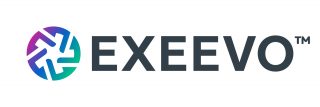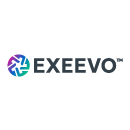Reality Check | Is Your Current Customer Engagement Solution the Best Choice for All Markets?

Do your sales reps drive a Ferrari? Probably not. Would they like one if you offered it to them? Probably.
Once they were used to driving around in a Ferrari, how easy do you think it would be to convince them to give it back? Nearly impossible. They would argue it is the only way to get to their appointments on time. Nothing else would measure up.
So why would a life sciences company provide Apple iPads to their sales force in an emerging market? The reps may use personal Android phones and motorcycle or public transportation to get to their customers. Compared to their income, this is like giving a Ferrari to a sales rep in Western Europe or the US, instead of a regular car.
This is why it makes sense to have different solutions for different markets. By doing so it allows an organisation to leverage scale in these markets, in the same way choosing one platform globally would.
This is especially relevant today.
While the numbers of sales reps in mature markets is steadily shrinking, in emerging markets the numbers have remained steady, mainly because of the existing business models and the significantly lower cost of labour.
On the other hand, because of the restricted access to HCPs due to COVID-19, the need for better, non-face-to-face customer engagement is suddenly a top priority. As such, sales reps in emerging markets and elsewhere do not need a Ferrari to get the job done today. They need their organisation to provide them with a smart customer engagement platform that is robust, agile, and constantly transforming in a nimble way based on their market reality, while benefiting from a proven foundation that guarantees scalability, quality, and compliance.
“The life science companies that lead the industry are ensuring success by adapting customer engagement models to different markets”
Hence a ‘two-tier’ platform approach makes perfect sense for companies with a truly global footprint; one for mature markets and another one for emerging markets with the flexibility to strategically swap small mature markets for large emerging markets.
Relating to the Ferrari giveaways; we will see a “mixed device strategy” emerge which includes considerations for the prevalence of certain devices and operating systems within Tier 1 and Tier 2 markets such as Android versus iOS usage, mobile versus laptop usage, and employer provided or “Bring Your Own Device” (BYOD) considerations.
Therefore, it is vital to adopt a customer engagement platform that is device agnostic. After all, iPads might not have the global market share a few years from now and choosing a platform which is already built to function well on all devices and OS types is the futureproof choice for your Tier 1 markets.
Another "tier’" may be needed in China as it is a unique market requiring a different approach. For example, it is difficult for a sales rep to use an iPad and email in China. Reps are not appreciated by the gatekeepers and patients in hospitals and none of the key stakeholders like HCPs are known for reading their emails. In a country where everything in life is done via smartphones, using an iPad in a hospital would identify a rep instantly. So, instead, smartphones and WeChat are used to track down customers.
Overall, running CRM or customer engagement solutions in China is complicated.
As the turnover of employees is typically in the range of 20-30%, a company with 10,000 reps needs to recruit, onboard and train 2,000 to 3,000 new reps every year. These reps go from one company to another, and the work is similar. Picking the CRM solution that other companies use in China saves a huge amount of training, and gets new hires onboarded much faster. So, it is not always about the best CRM, but what others are using…
That said, just sticking with the software you know/others have and deploying it globally does not make sense for truly global companies. Go look for a challenger for the incumbents!
The life science companies that lead the industry are ensuring success by adapting customer engagement models to different markets.
By: Edwin Erckens
About the author
 Edwin has created his opinions based on 10 years of experience in pharma and consumer healthcare in P&G, Teva and Sanofi, in local, regional, and global commercial IT/digital roles and chose Omnipresence by Exeevo for use in multiple markets during his time at Sanofi. He is a digital transformation leader with experience across different companies and industries. He started his career at P&G, then moved to Heineken, followed by regional and global executive IT/digital roles at Teva and Sanofi. He holds an MSc in Mechanical Engineering and has worked and lived in seven countries. He currently resides in his home country, the Netherlands.
Edwin has created his opinions based on 10 years of experience in pharma and consumer healthcare in P&G, Teva and Sanofi, in local, regional, and global commercial IT/digital roles and chose Omnipresence by Exeevo for use in multiple markets during his time at Sanofi. He is a digital transformation leader with experience across different companies and industries. He started his career at P&G, then moved to Heineken, followed by regional and global executive IT/digital roles at Teva and Sanofi. He holds an MSc in Mechanical Engineering and has worked and lived in seven countries. He currently resides in his home country, the Netherlands.
About Exeevo

Exeevo is a unified, intelligent and agile digital ecosystem for life sciences organisations to revolutionise health experiences for healthcare teams and patients in their journey towards sustainable health outcomes. Built with Microsoft clouds including Dynamics 365, Azure and Teams well as Cloud for Healthcare, Exeevo platforms are verticalised for customer and patient experiences, delivered by biopharma, medical devices, biotech and consumer health organisations.










